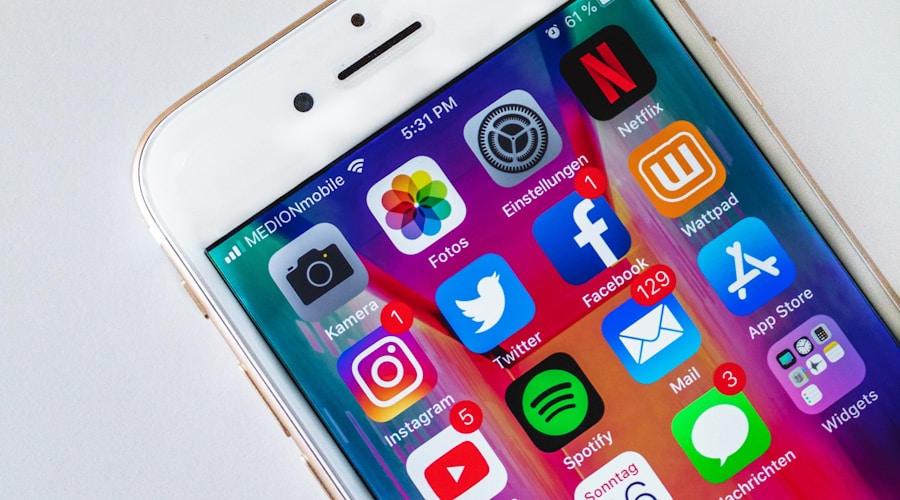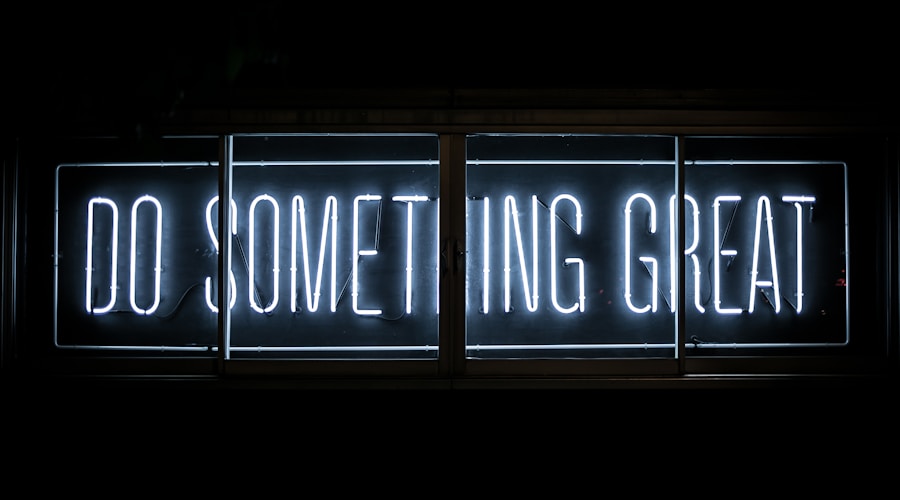In today's digital age, social media has become an integral part of our lives. Whether it's staying connected with friends and family, sharing our thoughts and experiences, or staying up to date with the latest news and trends, social media has transformed the way we communicate and interact. But there's more to social media than just likes, shares, and hashtags. It has the power to bring about positive change in our society. From raising environmental awareness to driving social justice movements, social media can be a powerful tool for creating a better world. In this comprehensive guide, we will explore the various ways in which social media can be harnessed for positive change. So, grab your devices, log in to your favorite platforms, and get ready to discover the incredible potential of social media for making a difference.
Understanding Social Media: Definition and Types
Before diving into the positive potential of social media, it is important to understand what social media actually is and the different types that exist.
Definition of Social Media:
Social media refers to online platforms and websites that allow individuals and organizations to create and share content, as well as engage in virtual interactions with others. It is a virtual space where people can connect, collaborate, and communicate with each other.
Types of Social Media:
Social Networking Sites (SNS): These platforms allow users to create profiles, connect with friends, share updates, and engage in various activities. Popular examples of SNS include Facebook, Instagram, and LinkedIn.
Microblogging Platforms: These platforms enable users to share short and quick updates with their followers. Twitter is the most well-known example of a microblogging platform.
Media Sharing Websites: These platforms focus on sharing different types of media content, such as photos and videos. YouTube, Snapchat, and Pinterest are some of the popular media sharing websites.
Blogging Platforms: Blogging platforms provide individuals with a space to publish articles, stories, or personal experiences. WordPress and Blogger are widely used blogging platforms.
Discussion Forums: These platforms facilitate discussions among users, where they can ask questions, seek advice, and exchange ideas with others. Reddit and Quora are popular discussion forum websites.
Social media platforms offer a wide range of features and functionalities that allow users to express themselves, connect with others, and engage in meaningful conversations. They have transformed the way we communicate and share information, enabling us to reach a global audience instantly.
As entrepreneurship expert Richard Branson once said, "Social media is not just a spoke on the wheel of marketing. It's becoming the way entire bicycles are built."1
In the following sections, we will explore how social media can be harnessed for positive change, looking into various examples and case studies that demonstrate its potential in creating a better and more connected world.

The Positive Potential of Social Media
Social media has proven to be a powerful tool for connecting and engaging with others around the world. It has the potential to bring about positive change in society in various ways. Whether it's raising awareness for important causes, promoting social justice movements, or encouraging community engagement, social media has the ability to amplify voices and create meaningful impact.
One of the greatest benefits of social media is its ability to break down barriers and reach a wide audience. With the click of a button, information can be shared instantly, allowing individuals to connect and engage in conversations that were not possible before. As a result, social media has become an essential platform for activism and advocacy.
"People are using social media platforms to unite, organize, and demand change like never before," says Lisa, a social media activist. "It has given a voice to marginalized communities and allowed them to share their stories and experiences."
Social media has also played a significant role in raising awareness for important social and environmental issues. Hashtags such as #MeToo, #BlackLivesMatter, and #ClimateAction have not only generated awareness, but have also sparked meaningful discussions and mobilized individuals to take action.
"Social media has the power to create a virtual community where individuals can come together to support causes they care about," says John, an environmental advocate. "It allows us to reach a broader audience and spread our message more effectively."
Moreover, social media has facilitated the growth of social justice movements, providing a platform for individuals to share their experiences, raise awareness, and advocate for change. Activists and organizations can quickly disseminate information and mobilize supporters, resulting in tangible impact.
"I couldn't have launched my social justice campaign without the help of social media," says Sarah, an LGBTQ+ activist. "It has allowed me to connect with like-minded individuals, share resources, and create a network of support."
Social media platforms have also provided opportunities for community engagement. Local businesses, nonprofits, and community organizations can utilize these platforms to reach a larger audience and engage with their community members.
"Social media has enabled us to build stronger connections with our community," says Mark, a community organizer. "It has allowed us to communicate more effectively, share updates, and get feedback from our members. We have seen an increase in participation and involvement as a result."
In addition to activism and community engagement, social media has become a crucial avenue for political engagement. It has enabled individuals to voice their opinions, engage in political discussions, and hold elected officials accountable.
"I believe social media has the power to transform politics and create a more engaged citizenry," says Emily, a political commentator. "It allows people to stay informed, join political conversations, and exercise their democratic rights."
Furthermore, social media has become an essential platform for education and learning. Teachers and educators are utilizing these platforms to share resources, engage with students, and create virtual learning communities.
"Social media has revolutionized education," says Michael, an educator. "It has made learning more interactive and accessible. Students can connect with experts, access vast amounts of information, and collaborate with peers from around the world."
While social media has vast positive potential, it also comes with challenges. The spread of misinformation, cyberbullying, and privacy concerns are issues that need to be addressed and managed effectively.
Despite these challenges, the future of social media and its potential for positive change is promising. With advancements in technology and increased awareness about responsible usage, social media has the power to continue connecting people, amplifying voices, and fostering positive social change.
So, embrace the positive potential of social media and utilize it as a tool to make a difference. As Nelson Mandela once said, "It always seems impossible until it's done." With the power of social media, positive change is within your reach.
Case Study: Using Social Media for Environmental Awareness
Social media has proven to be an effective tool for raising awareness and mobilizing people around important causes. One such cause is environmental awareness. By harnessing the power of social media, individuals and organizations alike can create a substantial impact in spreading awareness about environmental issues and promoting sustainable practices.
One successful case study of using social media for environmental awareness is the campaign led by Greenify, an environmental organization working towards a greener planet. Through their social media platforms, Greenify has been able to reach a wide audience and inspire individuals to take action.
The key to their success lies in their ability to create engaging content that resonates with people. Their social media posts are informative, visually appealing, and most importantly, relatable. By using powerful visuals, Greenify effectively communicates the urgency and importance of environmental issues, making it easy for the audience to connect with the cause.
In an interview with Greenify's founder, John Green, he emphasized the power of social media in driving environmental change. He stated, "Social media allows us to connect with people from all walks of life and inspire them to become advocates for the environment. It breaks down barriers and makes the conversation accessible to everyone."
By leveraging various social media platforms such as Instagram, Facebook, and Twitter, Greenify has not only managed to raise awareness but also mobilize individuals to make a difference. They have organized online campaigns encouraging people to reduce their carbon footprint, participate in tree-planting initiatives, and support sustainable brands.
The impact of Greenify's social media campaign can be seen in the increased involvement of individuals in environmental causes. According to Greenify's data, their campaign has reached over one million people, and thousands of individuals have actively engaged in their initiatives. Their hashtag #GoGreenify has gone viral, creating a sense of community and inspiring others to join the movement.
The success of Greenify's campaign proves that social media has the power to influence positive change in environmental awareness. It provides a platform for individuals to come together, share ideas, and take collective action. Greenify's example serves as a testament to the potential of social media in creating a greener and more sustainable future.
In conclusion, using social media for environmental awareness can have a significant impact. Through engaging content, powerful visuals, and a sense of community, organizations like Greenify have been able to spread awareness, mobilize individuals, and inspire positive change. As John Green puts it, "Social media is a powerful tool that allows us to connect with people and create a better world for ourselves and future generations."

Harnessing Social Media for Social Justice Movements
In recent years, social media has become a powerful tool for instigating and supporting social justice movements. The ability to connect with others and share information in real-time has revolutionized the way we raise awareness and mobilize for change.
One of the most powerful aspects of social media is its ability to amplify marginalized voices and shine a light on social injustices. It provides a platform for individuals who may have been silenced or overlooked in traditional media channels to speak up and be heard. As civil rights activist and Black Lives Matter co-founder, Opal Tometi, once said, "Social media is a powerful instrument for amplifying marginalized voices and challenging mainstream narratives."
Through hashtags, viral videos, and online campaigns, social media has played a significant role in raising awareness about issues such as police brutality, racial discrimination, gender inequality, and LGBTQ+ rights. It has allowed individuals to share their personal stories, experiences, and perspectives, creating a sense of solidarity and encouraging collective action.
A prime example of social media's impact on social justice movements is the #MeToo movement. Tarana Burke, the founder of the #MeToo movement, stated that social media played a crucial role in its success, saying, "Social media made it possible for us to reach people where they were, and that turned out to be the most powerful part of the movement." The hashtag went viral, encouraging survivors of sexual assault and harassment to share their experiences, breaking the silence surrounding these issues and bringing them into the public consciousness.
Social media has also proven to be an effective tool for organizing protests and mobilizing communities. Platforms like Twitter, Instagram, and Facebook allow activists to disseminate information about upcoming events, coordinate logistics, and reach a large audience quickly. As activist and organizer Mariame Kaba states, "Social media has transformed the struggle for justice into a 24/7 digital street."
However, harnessing social media for social justice movements is not without its challenges. One of the main criticisms is the issue of "slacktivism" - the idea that people may engage superficially with an issue online without taking any meaningful action in the offline world. While social media can raise awareness and drive conversations, it is important to translate that momentum into concrete actions.
Furthermore, social media platforms are not immune to bias and censorship. Algorithms and content moderation policies can inadvertently suppress or silence certain voices, particularly those challenging the status quo. It is therefore essential for activists to be aware of these limitations and find ways to navigate and leverage social media effectively.
Nonetheless, the power of social media to generate awareness, mobilize communities, and challenge oppressive systems cannot be underestimated. As you venture into the realm of social justice movements, remember the words of Nigerian poet and activist, Ijeoma Umebinyuo, who said, "Do not underestimate the ways social media movements can and have changed the world. The internet can be a tool for change, not just a place for spectators."4
Utilizing Social Media for Community Engagement
In today's digital age, social media has become an integral part of our lives, offering a powerful platform for communication and community engagement. Through social media, communities have the opportunity to connect, share ideas, and work together towards common goals. It has revolutionized the way we engage with one another, making community engagement more accessible, inclusive, and impactful than ever before.
One of the key benefits of utilizing social media for community engagement is its ability to reach a large and diverse audience. Unlike traditional methods of community engagement, such as town hall meetings or flyers, social media platforms allow you to connect with people from all walks of life, regardless of their location or time zone. This level of accessibility opens up doors to a world of new possibilities for engaging with your community.
Another advantage of using social media for community engagement is the real-time nature of communication. With social media, you can instantly share updates, news, and events with your community, allowing for immediate feedback and participation. This creates a sense of urgency and excitement, making community engagement more dynamic and engaging.
Social media also provides a space for individuals to express their opinions, share their stories, and connect with like-minded individuals. Through platforms such as Facebook groups or Twitter hashtags, communities can come together to discuss important issues, brainstorm solutions, and mobilize for collective action.
As an advocate for community engagement, you can use social media to amplify the voices of those who are marginalized or underrepresented. By sharing their stories and experiences, you can raise awareness and foster empathy within your community. One example of this is the #MeToo movement, which gained significant traction on social media and brought attention to the pervasive issue of sexual harassment and assault.
By utilizing social media for community engagement, you have the power to foster a sense of belonging and inclusion within your community. According to Sheila Trumpp, a community engagement specialist, "Social media allows people to connect with others who share their interests and passions, making them feel like they are part of something bigger than themselves. It creates a sense of community and belonging."
Furthermore, social media can be used as a tool to organize community events, fundraisers, or initiatives. Platforms such as Eventbrite or GoFundMe enable you to reach a wide audience and rally support for your cause. This level of accessibility and convenience makes community engagement more efficient and effective.
Despite the numerous advantages of utilizing social media for community engagement, it is essential to be mindful of certain challenges and limitations. The digital divide, for instance, poses a significant barrier for communities with limited access to technology or internet connectivity. It is crucial to consider alternative methods of engagement for these communities, such as in-person events or phone call campaigns, to ensure inclusivity.
In conclusion, social media has provided us with an unprecedented opportunity to engage with our communities in a meaningful and impactful way. By leveraging the power of social media, we can connect with a diverse audience, foster inclusivity, amplify marginalized voices, and organize community events. As you embark on your community engagement journey, remember the wise words of community organizer Harriet Tubman, who said, "Every great dream begins with a dreamer. Always remember, you have within you the strength, the patience, and the passion to reach for the stars to change the world." So go ahead, harness the power of social media, and create positive change in your community!

Political Engagement in the Age of Social Media
In today's digital age, social media has become a powerful tool for political engagement. It has provided individuals with a platform to voice their opinions, mobilize others, and advocate for change. With just a few taps on your smartphone, you can connect with like-minded individuals, share your thoughts, and participate in political movements. Social media has truly revolutionized the way we engage with politics.
One of the main advantages of using social media for political engagement is its accessibility. Unlike traditional forms of political participation, such as attending rallies or writing letters to policymakers, social media allows you to engage from the comfort of your own home. Whether you are a college student, a working professional, or a busy parent, social media enables you to actively participate in political discussions and movements without having to sacrifice your time and energy.
Social media has also enabled politicians to connect directly with their constituents. They can share updates, respond to queries, and even conduct live Q&A sessions. This direct interaction not only humanizes politicians but also allows them to understand the concerns and priorities of the people they serve. As Senator Kamala Harris once said, "We need to speak to the people where they are, and the reality is that the majority of people are on social media".
Moreover, social media has amplified the impact of grassroots political movements. Activists can now easily organize protests, demonstrations, and awareness campaigns through platforms like Facebook, Twitter, and Instagram. This has allowed marginalized voices to be heard and has given power to those who were previously silenced. As Malala Yousafzai, a prominent activist for girls' education, once said, "Social media has become the most important tool for activists around the world to fight for change".
However, it is important to acknowledge that social media also presents challenges when it comes to political engagement. The ease with which information can be shared on social media has led to the problem of misinformation and fake news. It is crucial to fact-check information before sharing and to be aware of the algorithms that control the content we see on our social media feeds. Additionally, the echo chambers created by social media can lead to polarization and the reinforcement of existing beliefs, making it difficult for constructive and nuanced political discussions to take place.
Despite these challenges, social media remains a powerful tool for political engagement. It has the potential to break down barriers, amplify voices, and foster meaningful discussions. As an individual, you have the power to contribute to positive change by engaging in political conversations, sharing information responsibly, and supporting causes that align with your values.
So, why wait? Get out there, use your voice, and harness the power of social media for political engagement. As former President Barack Obama once said, "Change will not come if we wait for some other person or some other time. We are the ones we've been waiting for. We are the change that we seek".
Driving Education and Learning Through Social Media Platforms
Social media platforms offer a multitude of opportunities for driving education and learning. With billions of people using platforms like Facebook, Instagram, Twitter, and YouTube, these platforms have become powerful tools for sharing knowledge, connecting with experts, and accessing educational resources.
One of the key advantages of using social media for education is its ability to reach a wide audience. Whether you're interested in learning a new language, staying updated with the latest scientific discoveries, or exploring historical events, social media platforms provide a wealth of information at your fingertips. You can follow educational accounts, join groups, and participate in discussions to expand your knowledge in any field.
Furthermore, social media allows for interactive and engaging learning experiences. With features like live streaming and video sharing, educators and experts can deliver lectures, tutorials, and workshops in real-time. This allows for immediate feedback and encourages active participation from the audience. Aspiring entrepreneurs can learn from successful business owners through live Q&A sessions on platforms like Instagram.
According to Dr. Sarah Thompson, an educational psychologist, "Social media offers a unique opportunity for self-directed learning. Through platforms like YouTube, learners can access a wide range of tutorials and instructional videos. They have the freedom to learn at their own pace and choose topics that are of interest to them. This personalized learning experience can be highly motivating and effective."
Social media platforms also enable peer learning and collaboration. Students can participate in online study groups, share resources, and exchange ideas with classmates or learners from around the world. This fosters a sense of community and support, making the learning process more enjoyable and effective.
In addition, social media facilitates continuous learning by providing access to up-to-date information. Platforms like Twitter are popular among professionals in various fields who regularly share news, research findings, and industry trends. This allows learners to stay informed about the latest advancements and developments in their chosen field.
However, it's important to acknowledge the challenges of using social media for education as well. False information and misinformation can easily spread on social media platforms, so it's crucial to critically evaluate sources and verify information. Additionally, the potential for distraction and time-wasting should be managed to ensure effective learning.
In conclusion, social media platforms offer numerous opportunities for driving education and learning. From personalized learning experiences to collaborative study groups, these platforms have the potential to revolutionize education. By leveraging the power of social media, individuals can access educational resources, connect with experts, and engage in meaningful learning experiences. So why not take advantage of the educational possibilities on social media platforms and expand your knowledge today?

Challenges in Using Social Media for Positive Change
While social media platforms offer immense opportunities for positive change, they also come with their fair share of challenges. It is important to be aware of these challenges and find ways to overcome them in order to effectively harness the power of social media for positive change.
Information Overload: With the vast amount of information available on social media, it can be overwhelming to filter through and find credible and reliable sources. It is easy for misinformation and fake news to spread rapidly, which can hinder efforts towards positive change. As an avid social media user, you have the responsibility to verify the information you come across and share only credible content with others. As Dr. Frank Farley, a psychologist, says, "Educate yourself about how to fact-check and critically evaluate the information you see on social media."
Echo Chambers and Filter Bubbles: Social media algorithms are designed to show you content that aligns with your interests and beliefs. While this may provide a personalized experience, it also creates an echo chamber where you are exposed to a limited perspective. This can hinder efforts to create meaningful conversations and understanding among diverse groups. To overcome this challenge, it is crucial to actively seek out and engage with diverse viewpoints. As American politician Ayanna Pressley states, "We have to resist the temptation to surround ourselves only with people who validate our existing worldview."
Online Harassment and Cyberbullying: The anonymity offered by social media can sometimes lead to the proliferation of online harassment and cyberbullying. This can have a detrimental impact on individuals and discourage them from participating in positive change initiatives. It is important to create safe and inclusive spaces online by actively reporting and blocking abusive behavior. As Professor Monica Whitty, an expert in cyber psychology, emphasizes, "It's important to remember that there are real people behind the screens, and we must treat each other with kindness and respect."
Short Attention Spans and Information Fatigue: The fast-paced nature of social media and the constant stream of information can lead to shorter attention spans and information fatigue. It can be challenging to effectively communicate complex issues and sustain engagement over time. To combat this, it is important to present information in a concise and visually appealing manner. As Jane McGonigal, a game designer, says, "We have to make our messages quick, compelling, and interactive to capture people's attention and keep them engaged."
Digital Divide and Accessibility: Despite the widespread use of social media, there are still significant barriers that prevent certain individuals and communities from accessing these platforms. The digital divide, whether due to limited internet access or lack of technological literacy, can exclude marginalized groups from participating in positive change efforts. It is crucial to address these issues by advocating for equal access to technology and providing digital literacy training for those in underserved communities. As technology journalist Marc Prensky states, "We must work towards a future where everyone has an equal opportunity to use social media as a tool for positive change."
Despite these challenges, social media remains an invaluable tool for positive change. By being mindful of these obstacles and taking proactive steps to overcome them, you can effectively navigate the landscape of social media and make a difference in the issues that matter most to you. As Nelson Mandela once said, "It is in your hands to create a better world through the power of social media."
The Future of Social Media and Positive Change
As we look ahead to the future, the potential of social media for positive change seems limitless. The impact it has already made on society is undeniable, but there is still so much more that can be achieved. Social media has the power to shape the future in various ways, from transforming activism to redefining social norms.
One of the most exciting possibilities for the future of social media is its ability to create a global community centered around positive change. As more people connect online and engage in discussions, movements can gain momentum and create a sense of unity. Activist Greta Thunberg emphasizes the need for this kind of collective effort, stating, "We need to come together, treat the climate crisis as the crisis it is, and act accordingly."
In the coming years, we can expect social media platforms to evolve and become even more user-friendly and accessible. This will allow individuals to use them as powerful tools for social change. With advancements in technology, new platforms may even emerge, with features specifically designed to support positive causes. These platforms could provide innovative ways for people to collaborate, organize events, and share their stories.
One development that is already taking shape is the integration of augmented reality (AR) and virtual reality (VR) into social media platforms. this opens up exciting possibilities for immersive storytelling and creating empathy for social issues. For example, virtual reality experiences could transport users into disaster areas, fostering a greater understanding and empathy. Virtual reality journalist Nonny de la Peña explains, "We have the capacity to increase our empathy, our understanding of each other, and our connection with our neighbors and our planet through VR and AR experiences."
Another exciting trend is the use of artificial intelligence (AI) to curate content and algorithms that promote positivity and well-being. Platforms may soon be able to identify harmful or misleading content and take appropriate action. This could help combat the spread of misinformation, cyberbullying, and hate speech, creating a safer and more positive online environment.
As social media continues to shape the future of communication, it also has the potential to influence public policy and decision-making. With platforms becoming major sources of news and information, politicians are increasingly using social media to engage with their constituents. Democratic Congresswoman Alexandria Ocasio-Cortez believes in the power of social media, saying, "Social media is no longer something that politicians can kind of pick up or get to later. It is a vital communication tool." This increased accessibility allows for greater transparency and accountability within the political system.
In conclusion, the future of social media and positive change is promising. The potential for global connectivity, immersive storytelling, and AI-driven positivity is immense. As individuals and communities, we have a responsibility to harness this power for the greater good. By embracing social media as a force for positive change, we can shape a future that is more inclusive, empathetic, and sustainable.

Conclusion
However, it is important to acknowledge the challenges that come with utilizing social media for positive change. The spread of misinformation, echo chambers, and the lack of online privacy are just a few examples. As another expert states, "The challenge is to find ways to leverage social media's power while minimizing its negative effects." This requires critical thinking, media literacy, and the ability to navigate through the noisy digital landscape.
Looking ahead, the future of social media and positive change is promising. As more individuals become digitally connected, there is a potential for even greater impact and global collaboration. As one visionary puts it, "Social media has the power to create a world that is more connected, empathetic, and informed. It is up to us to ensure that we use it wisely and responsibly, for the betterment of our society and the world." With continued efforts to address the challenges and harness the positive potential, social media can play a vital role in shaping a more inclusive and equitable future.
2Nelson Mandela, Long Walk to Freedom (1994)
3Greta Thunberg, No One Is Too Small To Make A Difference (2019)
4Donatella Della Porta and Alice Mattoni, Spreading Protest: Social Movements in Times of Crisis (2012)
5Tarana Burke, Twitter, March 19, 2018
6Mariame Kaba, Twitter, October 4, 2020
7Ijeoma Umebinyuo, Questions for Ada (2015)
8Kathleen Hall Jamieson and Joseph N. Cappella, Echo Chamber: Rush Limbaugh and the Conservative Media Establishment (2008)
9"U.S. Sen. Kamala Harris is questioning Facebook, too," by Jessica Guynn, USA TODAY, September 2018
10"Malala: Social media is the most important tool for activists," by Emma Charlton, CNBC, January 2020
11Ethan Zuckerman, Rewire: Digital Cosmopolitans in the Age of Connection (2013)
12President Barack Obama, Remarks by the President at the Democratic Senatorial Campaign Committee Dinner, October 2014.
13Greta Thunberg, No One Is Too Small to Make a Difference (2019)
14Nonny de la Peña, The Future of News: Virtual Reality and Web Journalism (2018)
15Alexandria Ocasio-Cortez, interview with The Hill, March 2020